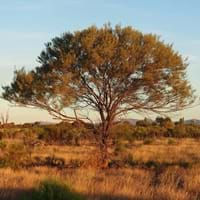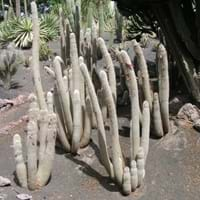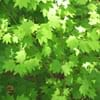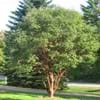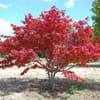Life Span
Perennial
Perennial
Origin
Australia
Central America, South America, Brazil
Types
Not Available
Not Available
Habitat
Scrubs, tussock grasslands, Upland savannas
Desert, Temperate Regions
USDA Hardiness Zone
10-11
12-15
AHS Heat Zone
12-10
12-10
Sunset Zone
8, 9, 12, 13, 14, 15, 16, 17, 18, 19, 20, 21, 22, 23, 24
12, 13, 21, 22, 23, 24
Habit
Upright/Erect
Upright/Erect
Flower Color
Lemon yellow
Red, Orange, Salmon
Flower Color Modifier
Bicolor
Not Available
Fruit Color
Gray Green
Not Available
Leaf Color in Spring
Blue Green
Not Available
Leaf Color in Summer
Blue Green
Not Available
Leaf Color in Fall
Blue Green
Not Available
Leaf Color in Winter
Blue Green
Not Available
Leaf Shape
Long Narrow
Succulent
Plant Season
Spring
Spring, Summer, Fall, Winter
Sunlight
Full Sun
Full Sun
Growth Rate
Slow
Not Available
Type of Soil
Loam, Sand
Loam, Sand
The pH of Soil
Acidic, Neutral, Alkaline
Acidic, Neutral, Alkaline
Soil Drainage
Well drained
Well drained
Bloom Time
Spring, Late Winter
Spring, Summer
Tolerances
Drought
Drought
Where to Plant?
Ground
Container, Ground, Pot
How to Plant?
Seedlings
Seedlings, Stem Cutting
Plant Maintenance
Medium
Medium
Watering Requirements
Do not water excessively
Reduce watering in winter
In Summer
Lots of watering
Lots of watering
In Spring
Moderate
Moderate
In Winter
Average Water
Average Water
Soil pH
Acidic, Neutral, Alkaline
Acidic, Neutral, Alkaline
Soil Type
Loam, Sand
Loam, Sand
Soil Drainage Capacity
Well drained
Well drained
Sun Exposure
Full Sun
Full Sun
Pruning
Remove dead or diseased plant parts, Requires little pruning
No pruning needed, Remove damaged leaves, Remove dead branches, Remove dead leaves
Fertilizers
All-Purpose Liquid Fertilizer, No fertilizers needed
Fertilize the soil before planting, slow-release fertilizers
Pests and Diseases
Insects, Root rot
Bacterial Stem Rot, fungus, Mealybugs, Spider mites
Plant Tolerance
Drought
Drought
Flower Petal Number
Single
Single
Foliage Texture
Fine
Bold
Foliage Sheen
Matte
Not Available
Attracts
Butterflies
Hummingbirds
Allergy
Asthma, Eye irritation, Headache, Nose Irritation, Throat itching, Vomiting
Not Available
Aesthetic Uses
Showy Purposes
Landscape Designing, Showy Purposes, Wild gardens
Beauty Benefits
Not Available
Not Available
Environmental Uses
Air purification, soil stabilisation
Air purification
Medicinal Uses
Not Available
No Medicinal Use
Part of Plant Used
Flowers, Sap, Seeds
Whole plant
Other Uses
Used as a dye, Wood is used fore making tools
Florist trade and landscaping, Used as Ornamental plant
Used As Indoor Plant
No
No
Used As Outdoor Plant
Yes
Yes
Garden Design
Shade Trees, Street Trees
Container, Houseplant, Rock Garden, Wall
Botanical Name
ACACIA aneura
Cleistocactus strausii
Common Name
Mulga, True Mulga
silver torch or wooly torch
In Hindi
Mulga
Cleistocactus strausii
In German
Mulga
Cleistocactus strausii
In French
Mulga
Cleistocactus strausii
In Spanish
Mulga
Cleistocactus strausii
In Greek
mulga
cleistocactus strausii
In Portuguese
Mulga
Cleistocactus strausii
In Polish
Mulga
cleistocastus strausii
In Latin
Mulga
Cleistocactus strausii
Phylum
Magnoliophyta
Magnoliophyta
Class
Magnoliopsida
Magnoliopsida
Order
Fabales
Caryophyllales
Family
Fabaceae
Cactaceae
Genus
Acacia
Cleistocactus
Clade
Angiosperms, Eudicots, Rosids
Angiosperms, Core eudicots, Eudicots
Tribe
Not Available
Trichocereeae
Subfamily
Not Available
Cactoideae
Number of Species
Not Available
Not Available
Properties of Mulga Tree and Cleistocactus Strausii
Wondering what are the properties of Mulga Tree and Cleistocactus Strausii? We provide you with everything About Mulga Tree and Cleistocactus Strausii. Mulga Tree doesn't have thorns and Cleistocactus Strausii doesn't have thorns. Also Mulga Tree does not have fragrant flowers. Mulga Tree has allergic reactions like Asthma, Eye irritation, Headache, Nose Irritation, Throat itching and Vomiting and Cleistocactus Strausii has allergic reactions like Asthma, Eye irritation, Headache, Nose Irritation, Throat itching and Vomiting. Compare all the properties and characteristics of these two plants. Find out which of these plant can be used as indoor plant. If you are interested to decorate your house and garden, find out aesthetic uses, compare them and select the plant which will beautify your surrounding. Along with beautification, try comparing medicinal and edible uses of Mulga Tree and Cleistocactus Strausii and you can choose the plant having best and most benefits.
Season and Care of Mulga Tree and Cleistocactus Strausii
Season and care of Mulga Tree and Cleistocactus Strausii is important to know. While considering everything about Mulga Tree and Cleistocactus Strausii Care, growing season is an essential factor. Mulga Tree season is Spring and Cleistocactus Strausii season is Spring. The type of soil for Mulga Tree is Loam, Sand and for Cleistocactus Strausii is Loam, Sand while the PH of soil for Mulga Tree is Acidic, Neutral, Alkaline and for Cleistocactus Strausii is Acidic, Neutral, Alkaline.
Mulga Tree and Cleistocactus Strausii Physical Information
Mulga Tree and Cleistocactus Strausii physical information is very important for comparison. Mulga Tree height is 550.00 cm and width 370.00 cm whereas Cleistocactus Strausii height is 60.00 cm and width 30.00 cm. The color specification of Mulga Tree and Cleistocactus Strausii are as follows:
Mulga Tree flower color: Lemon yellow
Mulga Tree leaf color: Blue Green
Cleistocactus Strausii flower color: Red, Orange and Salmon
- Cleistocactus Strausii leaf color: Not Available
Care of Mulga Tree and Cleistocactus Strausii
Care of Mulga Tree and Cleistocactus Strausii include pruning, fertilizers, watering etc. Mulga Tree pruning is done Remove dead or diseased plant parts and Requires little pruning and Cleistocactus Strausii pruning is done No pruning needed, Remove damaged leaves, Remove dead branches and Remove dead leaves. In summer Mulga Tree needs Lots of watering and in winter, it needs Average Water. Whereas, in summer Cleistocactus Strausii needs Lots of watering and in winter, it needs Average Water.
